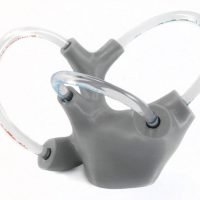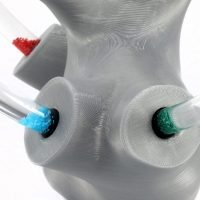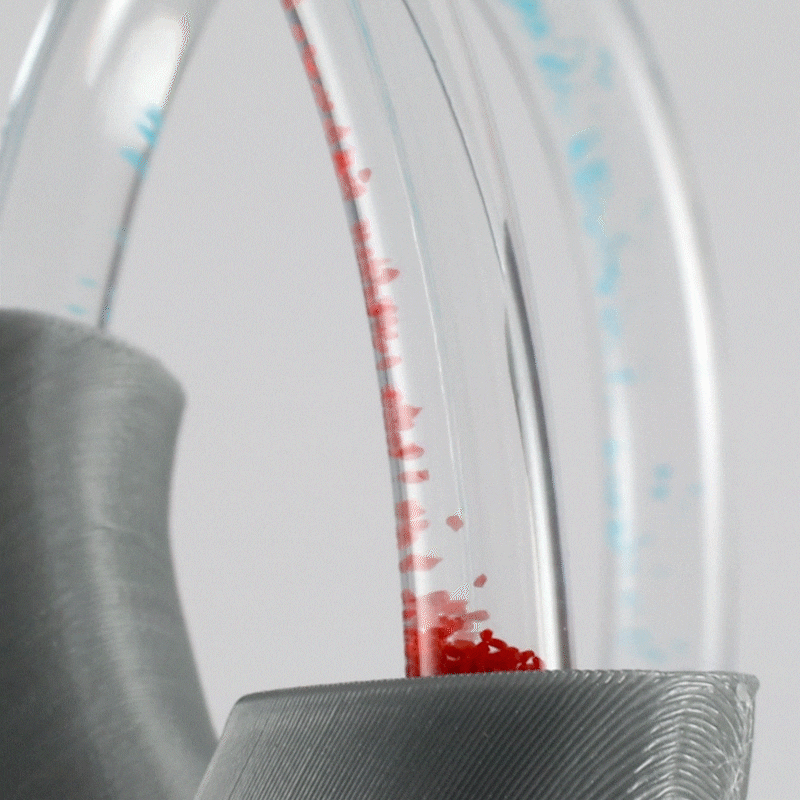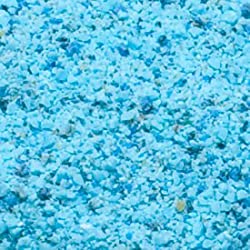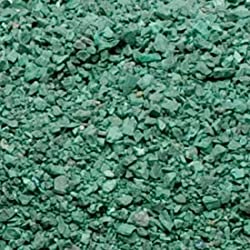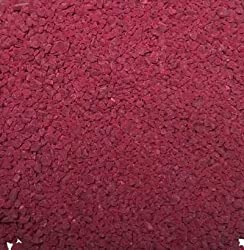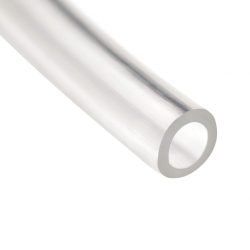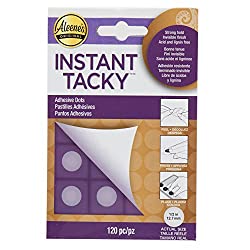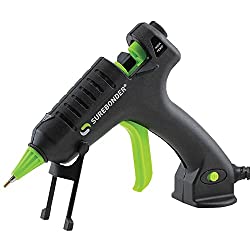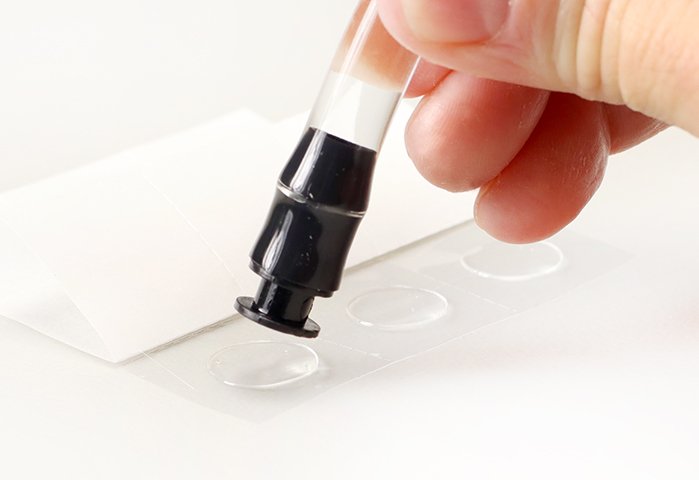how to make a fluid filled vestibular apparatus
We LOVE supporting vestibular education and as part of this, we are excited to share the model we have made to help researchers, clinicians, educators, students, and other inner-ear aficionados understand the fluid dynamics of the semicircular canals better.
This project should take you about 6-10 hours to print (depending on the 3D printer and settings) and about 1-2 hours to construct, but if you make them in bulk, it should take less time per model. If you’re not interested in doing this project yourself, you can purchase your own fluid-filled vestibular apparatus through our online store.
Special thanks to Dr. Christopher Chang from Fauquier ENT for putting together this video demonstrating how to construct the fluid apparatus! Check out his video resources on the Fauquier ENT YouTube page.
1. MATERIAL & TOOLS
Crushed Stones
While you can use any color you want, the size is the most important to get the correct proportions to the model and tubing. We have found these woodworking stones to be the best and most consistent size for our usage:
Technical Calculation:
The average interior diameter of the semicircular endolymph canal is 500µm (micrometers) while the otoconia have diameters between 5-50µm. This gives us a proportion range between 1:100 and 1:10. Since the tubes we selected have an inner diameter of 1/4″ or 6.35 mm, we are looking for stones between the size of 0.0635 to 0.635 mm.
Mineral Oil
We have tested over a dozen types of fluids and mineral oil turned out to the be the most accurate representation of the fluid dynamics of the inner ear that we could find.
Note: The viscosity of the oil changes with temperature and the tests we did were at normal room temperature. Additionally, please use only mineral oil that is NSF approved because it will be free from any dyes, fragrances, or additives that can affect the tubing.
Clear Tubing
To represent the canals we selected tubing that has good clarity and a smooth interior.
Note: Oil can seep through most of the common PVC tubing available, so if you plan to purchase from a different source than we found, make sure it is suitable for oil. Polyurethane tubing has been the most successful in our testing. Most automotive tubing will be compatible.
You will need 710mm (~28″) per model. The diameters of the tubing is:
- Inner Diameter (ID): 1/4″ (6.35 mm)
- Outer Diameter (OD): 3/8″ (9.525 mm)
Tubing Caps
In order to seal in the oil, you must use end caps that are designed for the above 1/4″ ID tubing. You will need 6 end caps per model.
Note: The photos in the below tutorial show black end caps–this was done for clarity of the photography. The ones linked here are clear which looks visually nicer in the model.
Instant Tacky Adhesive Dots
We have tried different glues to adhere the sealed tubes to the model, but these adhesive sticky dots are the quickest we’ve found. They are quite sticky and make assembly a snap! You will need 6 sticky dots per model.
Mini Hot Glue Gun
In order to seal off the tubing end cap to represent the cupula side of the semicircular canals, you need a glue gun with a small enough tip to fit into the end cap. You might have one that will work, but this is the one we use and it’s great for its intended use. This glue gun comes with enough glue sticks to make about 30 models.
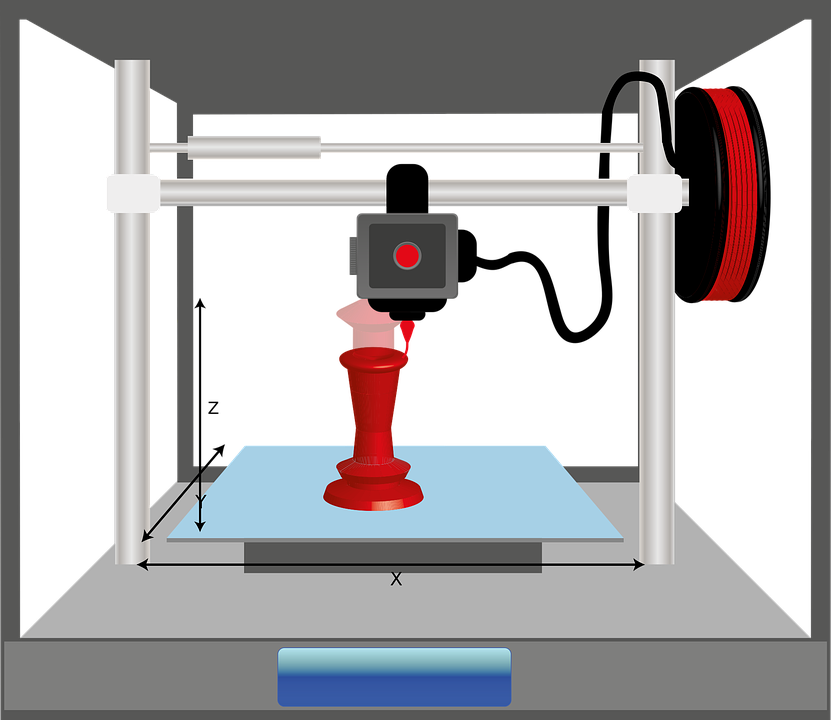
3D Printer
You will need access to a 3D printer that can print the model with the following minimum dimensions:
- Width: 147 mm
- Depth: 114 mm
- Height: 120 mm
If you aren’t able to find one, check out a service like Craftcloud. Use referral code REFN8KMEEQL to get 10% off your order! Our models are provided in millimeters and we recommend any basic plastic like PLA or SLA for a cost effective printing
2. DOWNLOAD & PRINT MODEL
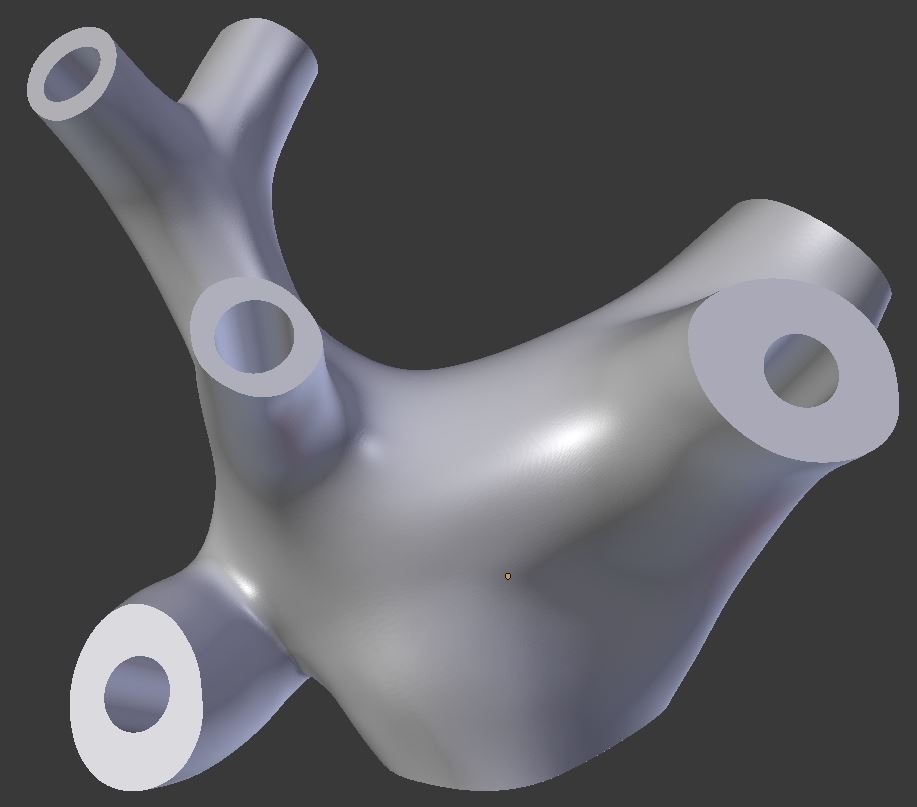
1.) Download
We have published our models on a 3D design site called Printables which allows people to collaborate and connect on projects. Please visit the Vestibular First 3D Models page to view this and our other 3D models.
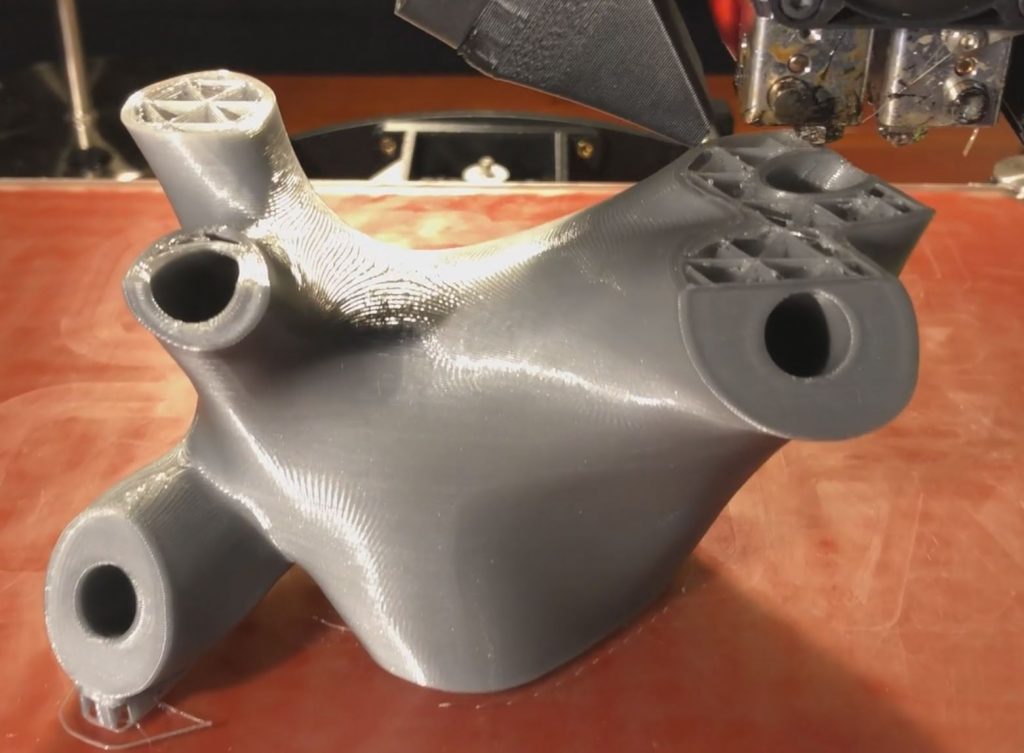
2.) Print Model
Here are the following settings we use for the the best output with Cura:
- Material: PLA
- Wall Line Count: 4
- Z-Seam Alignment: User Defined
- Z-Seam X: 0
- Z-Seam Y: 1000
- Z-Seam Relative: Yes
- Infill Pattern: Cubic Subdivision
- Support Placement: Touching Build Plate
- Enable Support Interface: Yes
3. CONSTRUCT MODEL
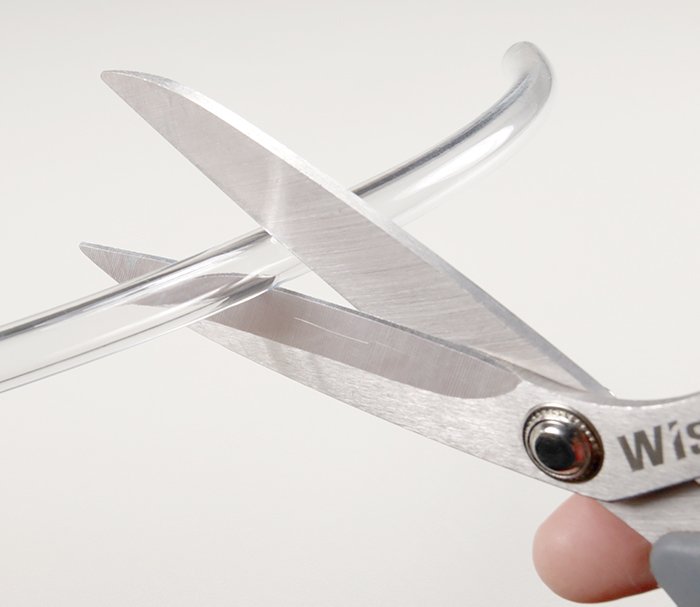
A.) Cut Tubes
Measure out the tubing and cut to the following lengths:
- Horizontal Canal: 210 mm
- Posterior Canal: 250 mm
- Anterior Canal: 250 mm
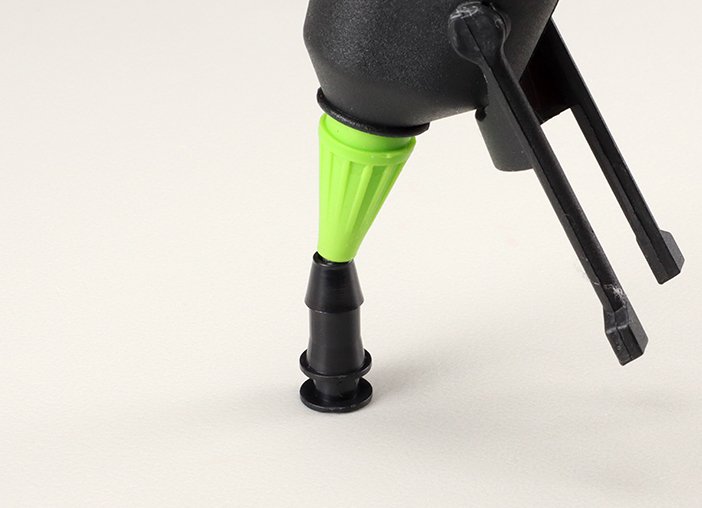
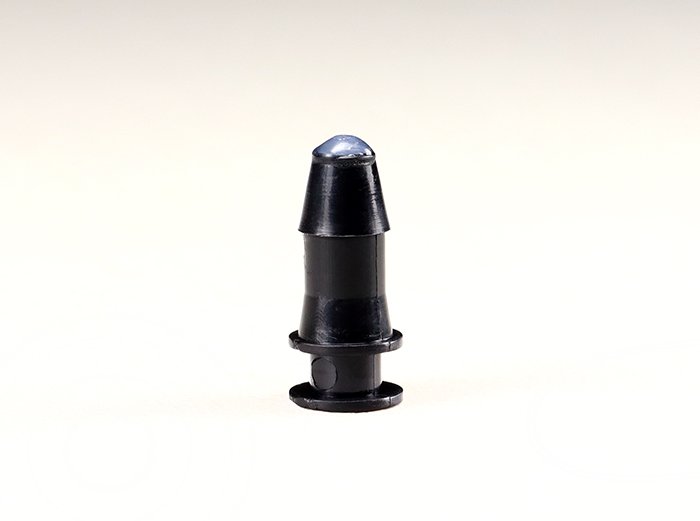
B.) Make Cupula End Caps
Fill 3 end caps with hot glue and leave a small convex surface over the end to simulate the profile of the cupula. Fill the entire cap by starting at the bottom and working your way to the top. Be careful not to allow any hot glue to stick to the outside parts of the end cap or it will not seal correctly.
Allow end caps to cool. They will return to the original glue color and no longer be transparent.
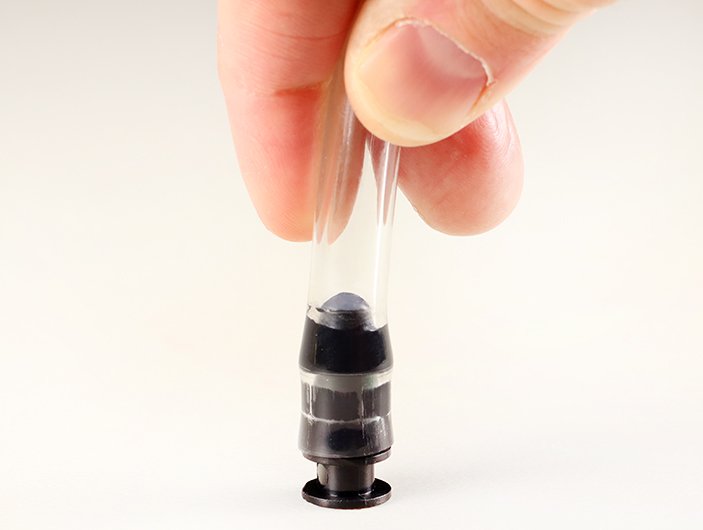
C.) Insert Cupula End Caps Into Tubes
Once cooled, insert 1 cupula end cap into each of your cut tubes. You should have one side open on each tube when finished with this step.
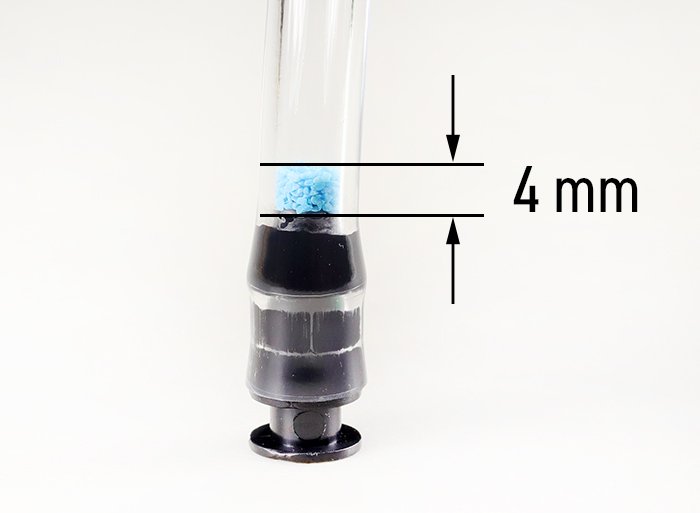
D.) Fill Tubes with Stones
Using a small scoop and funnel, fill the tube with appx. 4 mm with crushed stones. If you are following our scheme, use the following colors to represent its respective canal:
- Horizontal: Blue
- Posterior: Red
- Anterior: Green
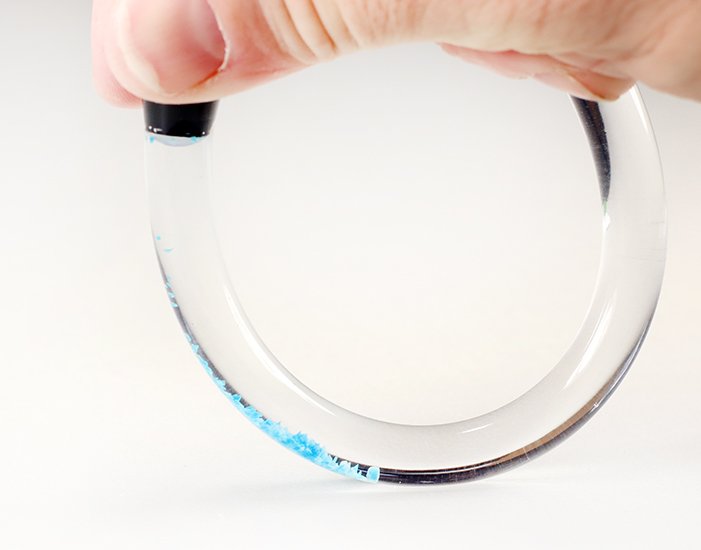
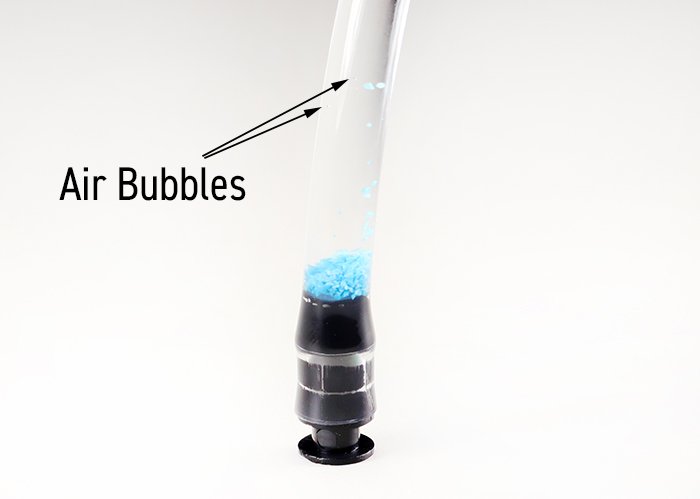
E.) Fill Tubes with Oil & Remove Air Bubbles
Fill the tubes with oil about 90% of the way with the oil. You will notice there are small air bubbles trapped under the stones and on the walls. With your finger on the open side of the tube, raise the cupula side of the tube and let the stones fall down. Then gently tap the tube against the side of a table or solid structure to help the air bubbles rise to the top. You may have to do this several times before they all float to the top. Stand the tubes upright to help move the process along–it can take up to 5 minutes for the smallest of the bubbles to meander up to the top.
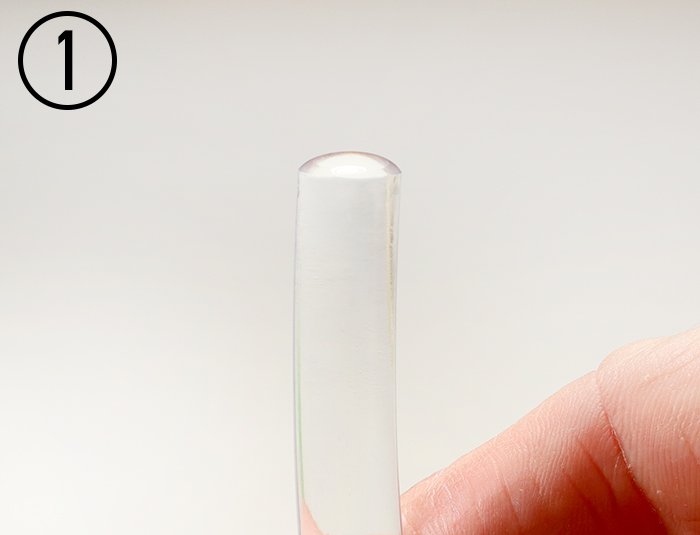
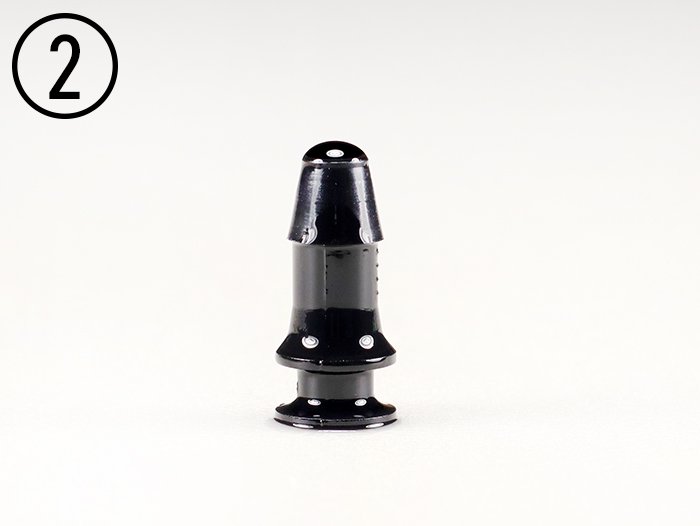
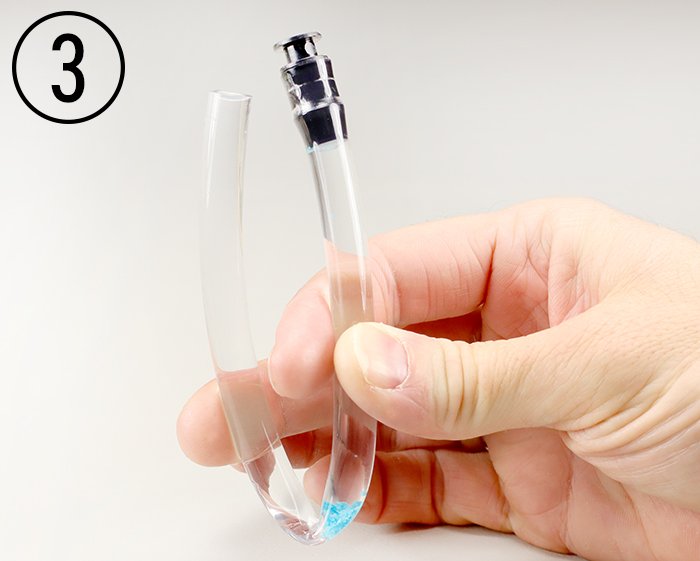
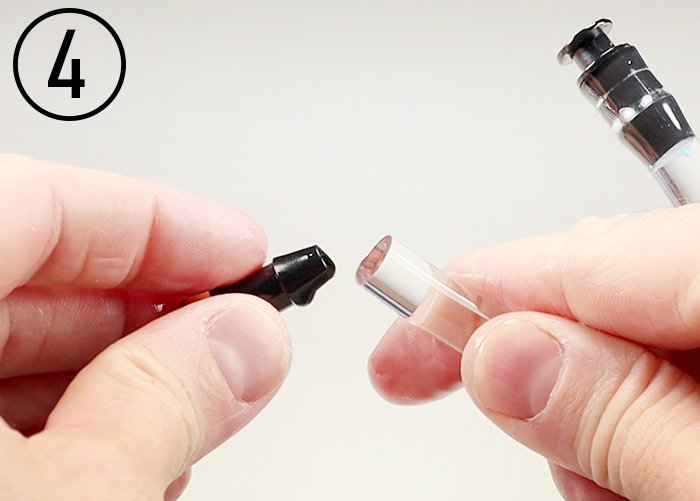
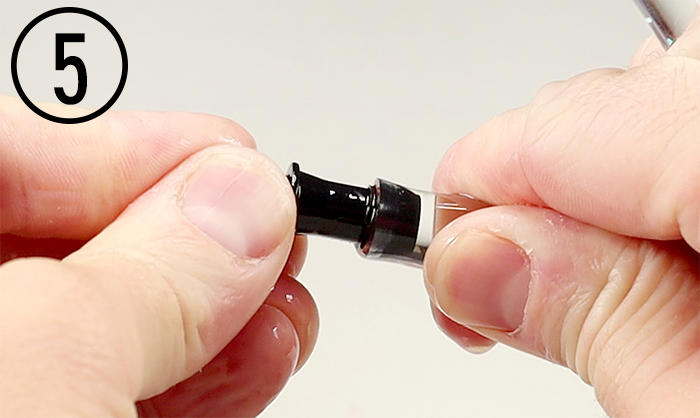
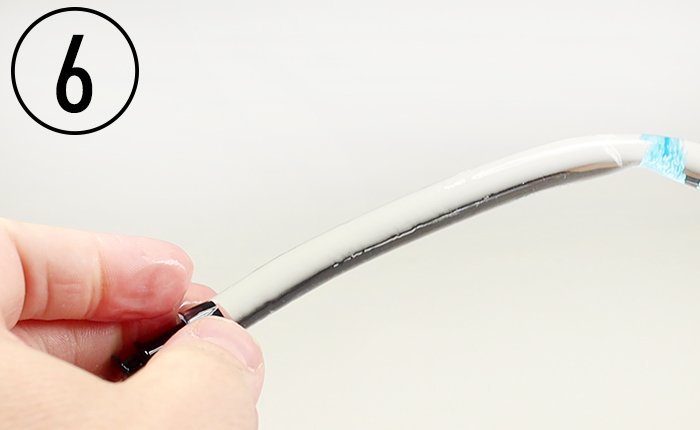
F.) Seal Tubes
This step requires the most practice to get right, so take your time and be patient with the process outlined below:
- Fill the tubes with oil until you see a convex bubble at the end.
- While holding at an angle, fill remaining 3 end caps with oil until you see a convex bubble at the top. It’s important to fill at an angle to prevent air bubbles from getting trapped at the bottom of the end cap. Place end caps standing up on your working surface.
- Grasp the tube and bend it in half to create a crease. Do this over a sink or trash can because some oil will come out. This step is important to prevent too much pressure from building up in the tube when sealing in the last step–so don’t skip it!
- Select an end cap and and tube and angle them together while holding over a sink or trash can. Make sure the oil does not become concave in either the end cap or tube to prevent air from being introduced.
- Press the end cap about halfway into the tube. It will create a temporary seal which you will then use to confirm there are no air bubbles by tilting the tube left and right.
Note: Once the end caps are pressed in, they are almost impossible to remove without damaging the caps and tubes–so this is really your last chance to get the air out–take your time!
- Once you’ve confirmed there are no air bubbles in the tube, release the bend you created in step 3 and press the end cap fully into the tube. If your hands are too slippery to grasp the tube firmly, wrap a paper towel around the tube and then press this into a hard surface like a table or countertop.
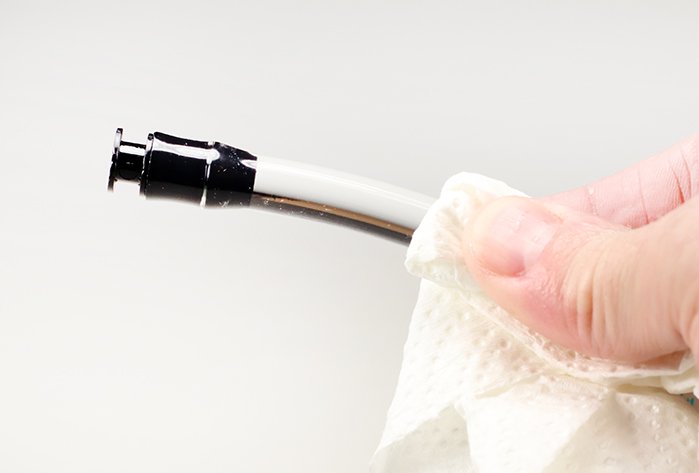
G.) Clean Tubes
Once you have sealed all of the tubes and there are no air bubbles, use warm soap and water in a sink to wash the tubes and remove any residual oil from the outside. Dry with a towel to prevent hard water stains from appearing.
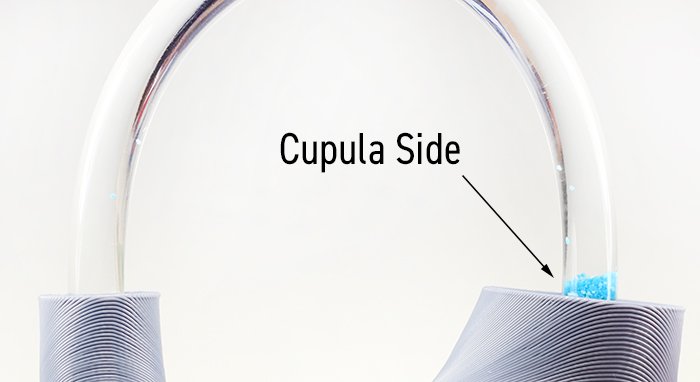
H.) Glue Tubes into Model
Pull back the white backing from the Adhesive Tacky Dots to expose a row of the sticky circles. One end at a time, press the cap into the dot to transfer the sticky glue onto the tube. Press the end cap into the model firmly. The vestibular side of the tube is deeper than the ampulla side and you should not see the end cap. The cupula side of the tube will show a small part of the end cap and the convex cupula you added with hot glue above.
Note: Make sure you affix the cupula side of the tube into the wider ampulla side of the canal or you will not be able to replicate the anatomy of the inner ear correctly.
Success!
Please share your success by letting our team know via Twitter, Facebook, or Thingiverse with a photo of your model! If you have ideas on how to improve the model, please let us know–we’re always open to feedback to make it better!

